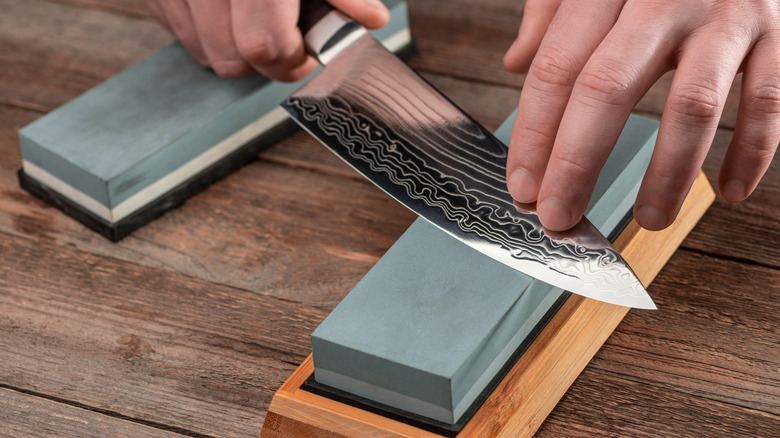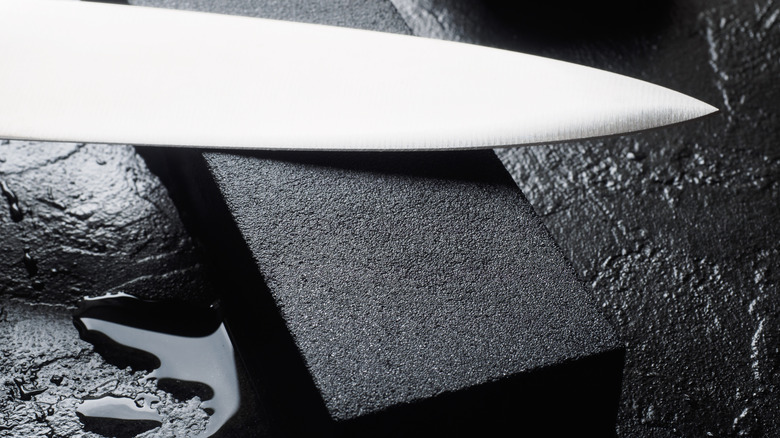Don't Forget To Clean Your Sharpening Stones
Having a sharp knife is a cardinal rule of kitchen safety. Even the best chef's knife eventually gets dull, and while you can always take your knife to a professional sharpener, it is often more cost-effective and convenient to sharpen your knives at home by using a sharpening stone. If you choose the at-home route, however, it's important to remember to clean your sharpening stone to keep it working well.
Sharpening stones work in a similar fashion to sandpaper. As you drag the blade across the stone, it grinds the dull side of the knife down to a fine edge once more. Just like sawdust is a byproduct of sanding wood, metal filings are a byproduct of sharpening a knife, and these filings — along with general grit and grime — can clog up a sharpening stone and make it much less effective at doing its job. Making sure to clean your stone every once in a while will prevent this buildup from occurring and will keep your stone performing well.
How to clean a sharpening stone
The method you use for cleaning your sharpening stone depends on how dirty it is. If you're doing a quick maintenance wash on a lightly soiled stone, you can just give it a quick rinse with soap and water. If your stone has significant buildup, however, you will want to use a lubricant like honing oil or WD-40 and a scouring brush to scrub away the grime, after which you can rinse the stone off in warm water. Allow the stone to dry completely before using it again.
Two styles of sharpening stones are exceptions to this approach: Arkansas stones and natural stones. If you have one of these, it will be best cleaned by submerging in boiling water to loosen the buildup and then scrubbing it away. This boiling method will also work for any type of stone with particularly stubborn buildup that will not loosen using the methods already detailed.

